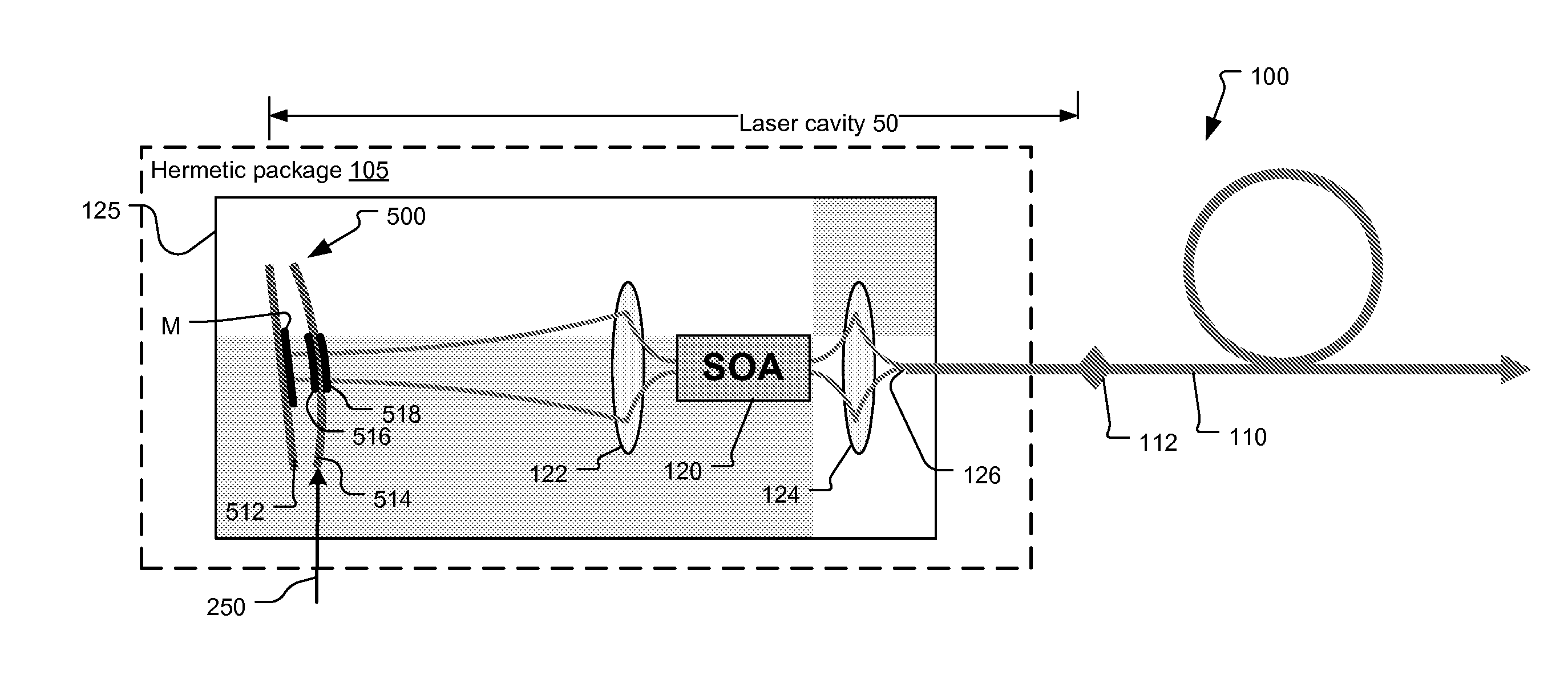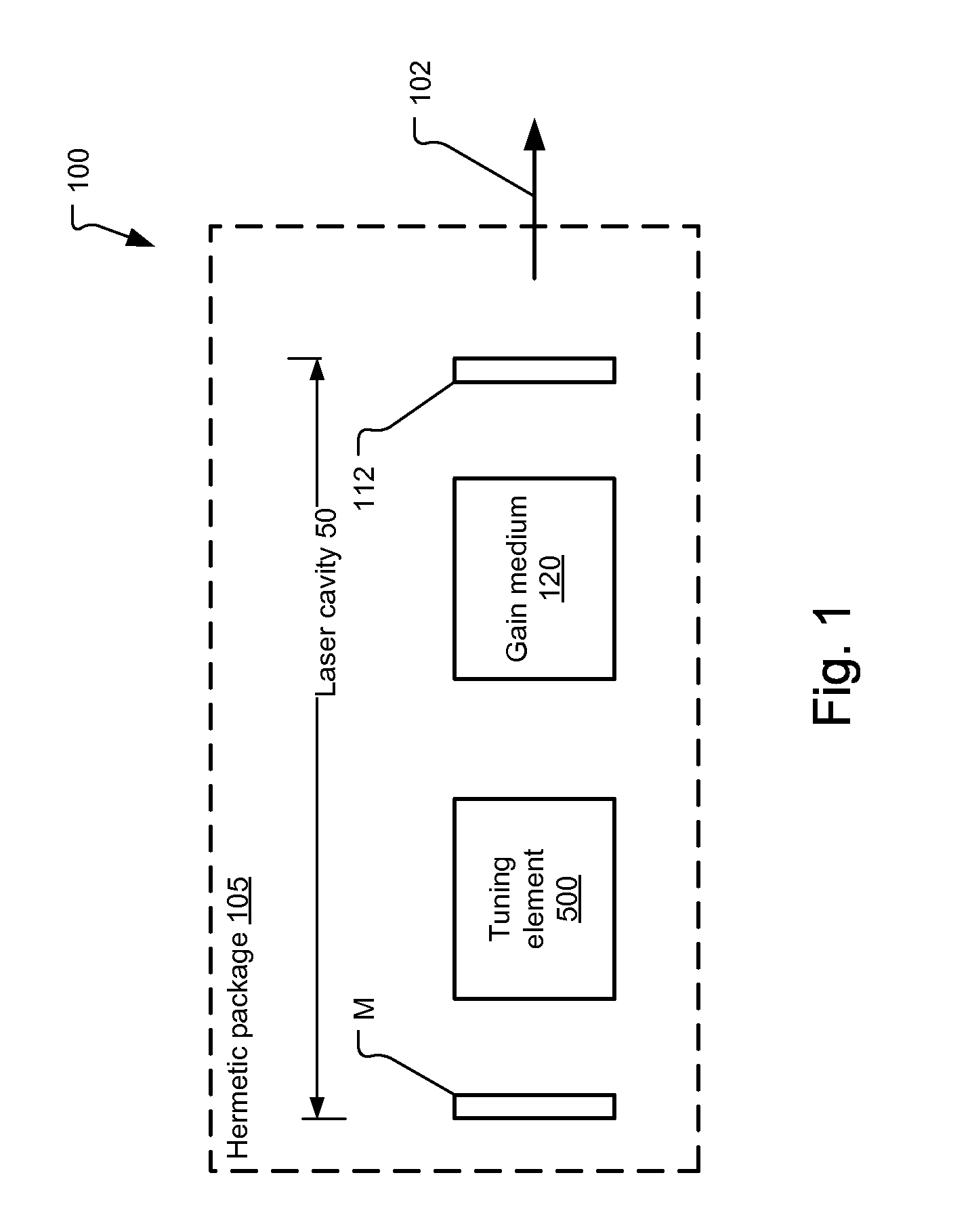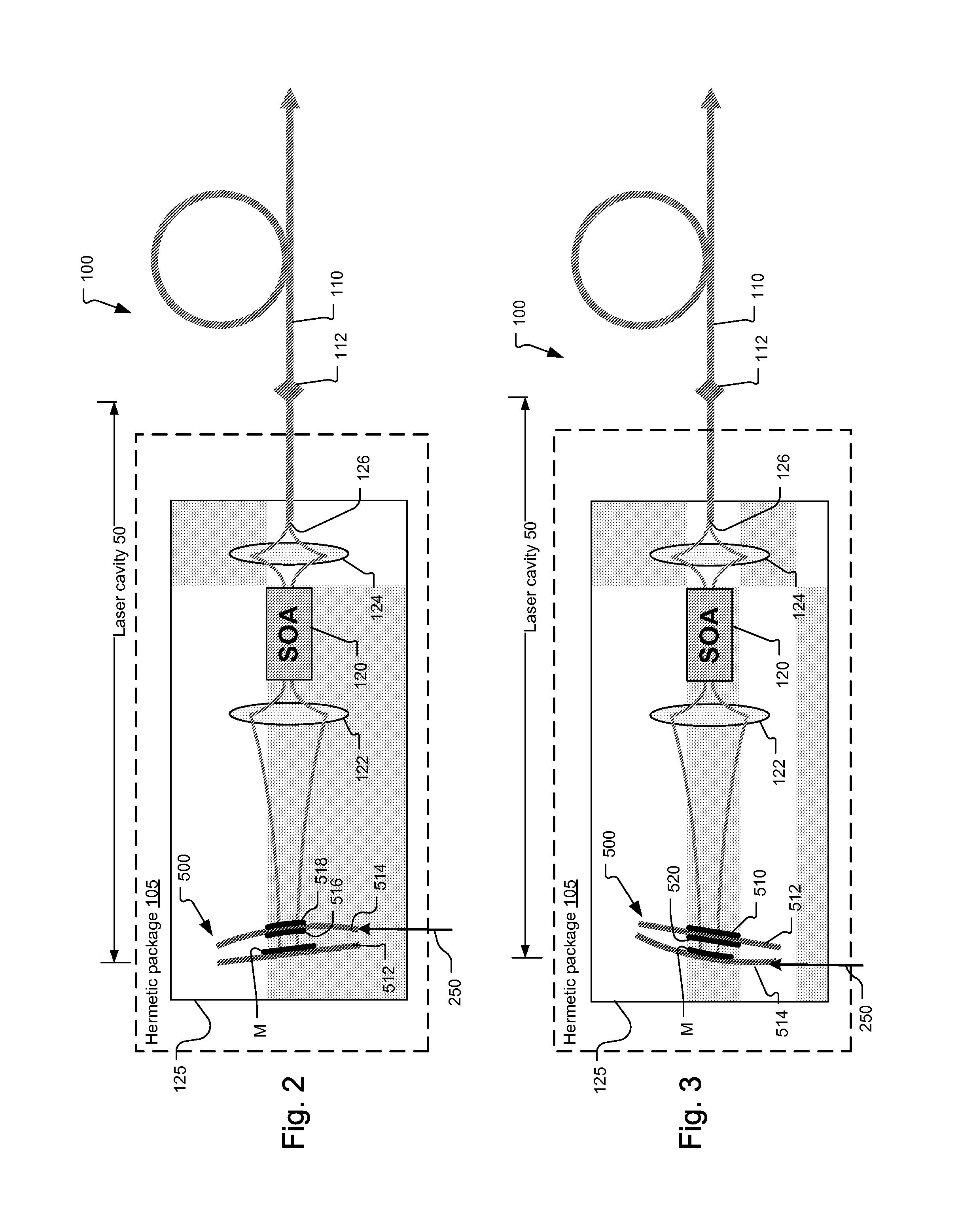Dielectric-Enhanced Metal Coatings for MEMS Tunable Filters
a metal coating and tunable filter technology, applied in the direction of optical radiation measurement, instruments, spectrometry/spectrophotometry/monochromators, etc., can solve the problems of reducing the high-speed performance of the tunable filter or other reflective structure of the fp tunable filter, and the tunable filter or other reflective structure is difficult to deflect or otherwise move. ,
- Summary
- Abstract
- Description
- Claims
- Application Information
AI Technical Summary
Benefits of technology
Problems solved by technology
Method used
Image
Examples
Embodiment Construction
[0035]FIG. 1 illustrates a general tunable laser configuration and the use of hybrid metal-dielectric optical coatings in the laser, according to the principles of the present invention.
[0036]The hybrid metal-dielectric optical coatings generally have two advantages. First, they prevent stray light within a hermetic package 105, for example, since light that might be transmitted through a standard dielectric optical coating will be absorbed by the hybrid metal-dielectric optical coatings. Secondly, hybrid metal-dielectric optical coatings tend to have broader reflectivity spectrums, which is helpful in tunable lasers with broad spectral scan bands, since the reflectivity of the end mirror M will be more consistent, and high, over the scan band.
[0037]In more detail, the tunable laser 100 includes a tuning element 500 and a gain medium 120 within an optical cavity 50 defined by an output mirror 112 and a back mirror M. According to a typical application of the present invention, the b...
PUM
 Login to View More
Login to View More Abstract
Description
Claims
Application Information
 Login to View More
Login to View More - R&D
- Intellectual Property
- Life Sciences
- Materials
- Tech Scout
- Unparalleled Data Quality
- Higher Quality Content
- 60% Fewer Hallucinations
Browse by: Latest US Patents, China's latest patents, Technical Efficacy Thesaurus, Application Domain, Technology Topic, Popular Technical Reports.
© 2025 PatSnap. All rights reserved.Legal|Privacy policy|Modern Slavery Act Transparency Statement|Sitemap|About US| Contact US: help@patsnap.com



